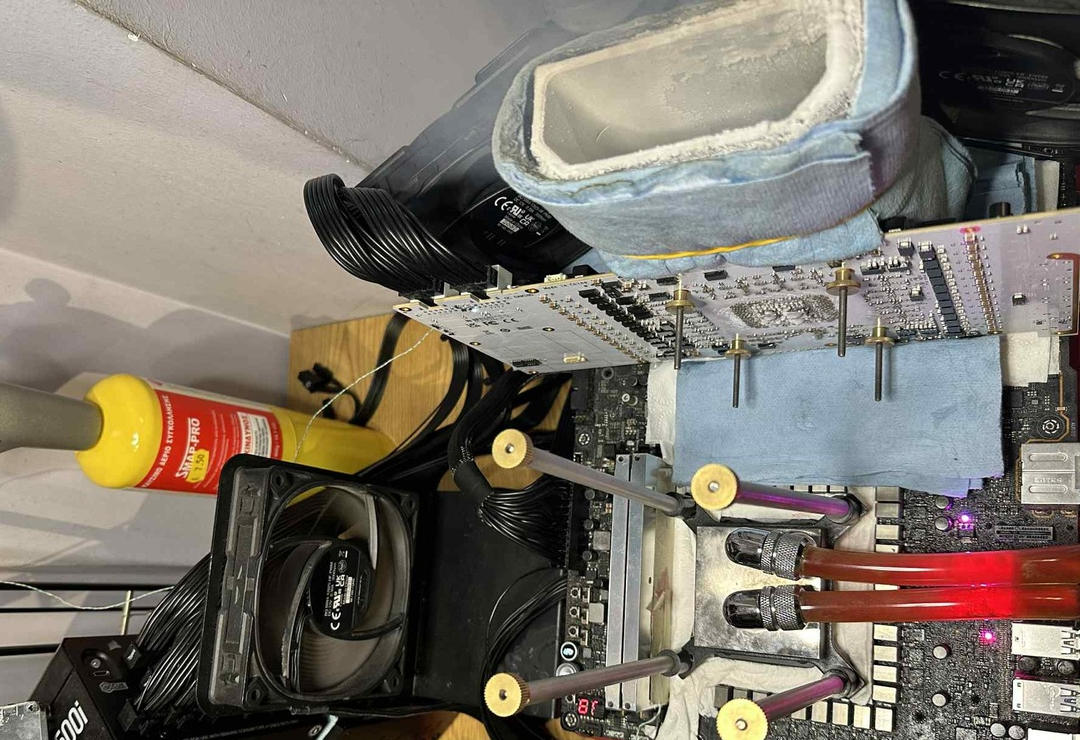GALAX GeForce RTX 5090 D Smashes World Records with 3650 MHz Overclock and 36 Gbps GDDR7 Memory Speeds
In a spectacular show of GPU overclocking mastery, Team OGS has once again raised the bar by achieving unprecedented performance levels using the GALAX GeForce RTX 5090 D XOC GPU, pushing it to a record-breaking 3650 MHz GPU clock speed and 36 Gbps GDDR7 memory speeds. These results established new world records in 3DMark Port Royal, Unigine Superposition, and GPUPI, cementing the RTX 5090 D as the most extreme GPU to date in the overclocking scene.
Record-Breaking Performance with XOC BIOS and 2000W Power Ceiling
For this overclocking milestone, Team OGS deployed a formidable hardware configuration:
GPU: GALAX GeForce RTX 5090 D XOC
CPU: Intel Core i9-14900KF
Motherboard: ASUS ROG Maximus Z790 APEX Encore
Power Delivery: Two 12V-2x6 connectors rated at up to 600W each (1200W total), with a modified XOC BIOS enabling up to 2000W power limits
Stavros from Team OGS shared details of their record-setting run, noting that the GPU was pushed beyond 3.6 GHz in some benchmarks, with memory speeds reaching 36 Gbps—a 28.5% increase over the stock 28 Gbps GDDR7 memory.
This immense performance uplift translated into jaw-dropping memory bandwidth, climbing from 1.792 TB/s (stock) to a staggering 2.304 TB/s.
Benchmark Records Set by GALAX RTX 5090 D
The results achieved speak volumes about the potential of the RTX 5090 D when paired with expert-level tuning:
GPUPI v3.3 32B Score: 39.434 seconds at 3650 MHz GPU / 2250 MHz VRAM
3DMark Port Royal Score: 47,469 points at 3570 MHz GPU / 2250 MHz VRAM
Unigine Superposition (1080p Xtreme): 38,237 points at 3540 MHz GPU / 2250 MHz VRAM
These overclocking feats are not only a triumph for Team OGS but also a testament to the engineering capabilities behind GALAX’s XOC series and the overclocking headroom present in NVIDIA’s new GDDR7-based RTX 5090 architecture.
A Glimpse Into the Future of Extreme Overclocking
So far, only the GALAX RTX 5090 D has been subjected to this level of overclocking, which suggests that even higher scores and performance metrics could be achieved once more partners roll out custom PCBs and unlocked BIOSes for standard GeForce RTX 5090 GPUs. As the enthusiast and competitive overclocking community continues to innovate, records like these push the boundaries of what is thermally, electrically, and technically possible.
What do you think about this monstrous overclocking feat? Can future RTX 5090 models raise the bar even further? Share your thoughts in the comments!




